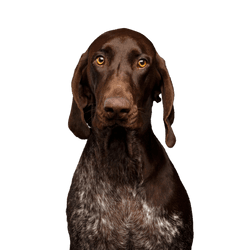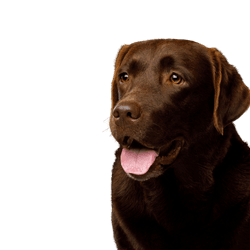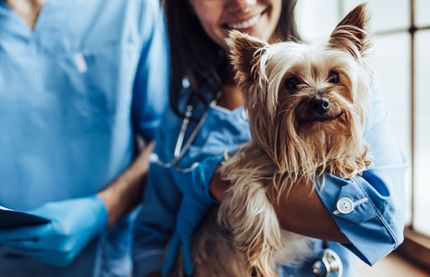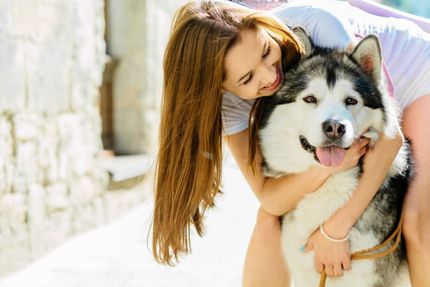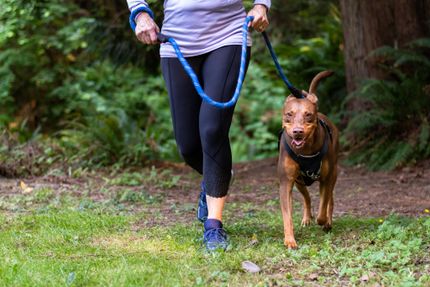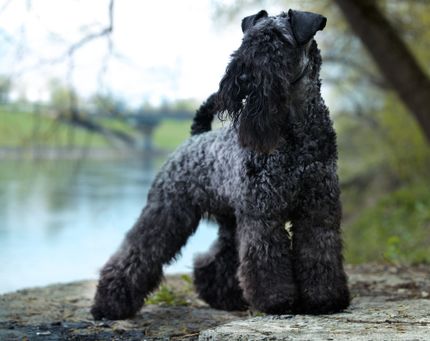German Shorthaired Lab:German Shorthaired Pointer and Labrador Retriever Mix
Facts & Origin
German Hunting Dog and Labrador Retriever Mix - a hybrid breed.
This breed is a mix of the German Shorthaired Pointer and the Labrador Retriever. They are a loyal and loving breed that gets along well with children and other animals. They are active and need lots of exercise, but can snuggle on the couch just as well.
What are breed characteristics of this mix dog?
The average German Shorthaired Pointer-Labrador Retriever mix weighs about 50 kg and is 57 cm tall. It is a medium to large sized dog with a muscular build. They have a short, dense coat that is typically black and brown in color. Their ears are floppy and their tails are long and thick.
| Alternate Name | German Shorthair Labrador |
| Origin | Germany - UK |
| Life expectancy | 10 - 14 years |
| Care requirements | low-maintenance |
| Activity level | average to high - average |
| FCI group | not recognised |
| AKC group | not recognised |
| KC group | not recognised |
More German Shorthaired Pointer mixes
More Labrador Retriever mixes
Attitude, character and temperament of the breed
Possible character traits of German Pointer and Labrador Retriever mix - Such is probably his nature.
There are a few things to consider when researching the character and ownership of a German Shorthaired Pointer and Labrador Retriever mix. This breed is not very common, so information may be limited. However, these are two very popular breeds known for their friendliness, intelligence and activity. Therefore, it is likely that the German Shorthaired Pointers-Labrador Retriever mix has some of these characteristics. The German Shorthaired Pointer is a hunting dog and therefore may be more independent than the Labrador Retriever, which was bred to be a working dog. The German Shorthaired Pointer is also bred for its tracking and pointing abilities, so this mixed breed may be a good choice for someone looking for a dog that can hunt or perform other activities that require these skills. The Labrador Retriever is bred to be a working dog, so it is probably easier to train than the German Shorthaired Pointer. It is also important to note that the Labrador Retriever is a very popular breed, so it is likely that this mixed breed is more common than the German Shorthaired Pointer.
Character
Usage


Health and breeding information
What diseases can occur in the German Shorthair and Labrador Retriever mix.
The German Shorthaired Labrador Retriever mix is very popular among many dog lovers. This mixed breed is a combination of two of the most popular dog breeds in the world, the German Shorthaired Pointer and the Labrador Retriever. Both breeds are known for their intelligence, loyalty and trainability. However, like all mixed breeds, the German Shorthaired Pointer-Labrador Retriever mix is prone to some health problems.
The most common health problem in the German Shorthaired Pointer-Labrador Retriever mix is hip dysplasia. Hip dysplasia is a condition in which the hip joint does not fit properly into the socket. This can cause pain and lameness in affected dogs. Hip dysplasia is hereditary and can occur in both purebred dogs and mixed breeds. German Shorthaired Pointers and Labrador Retrievers are both susceptible to this condition, and so it is not surprising that it also occurs in their mixed breed offspring.
Another health problem that occurs in German Shorthaired Pointer-Labrador Retriever mixes is elbow dysplasia. Elbow dysplasia is a condition in which the bones in the elbow do not fit together properly. This can cause pain and lameness in affected dogs. Elbow dysplasia is hereditary and can occur in both purebred dogs and mixed breeds. German Shorthaired Pointers and Labrador Retrievers are both susceptible to this condition, and so it is not surprising that it also occurs in their mixed breed offspring.
The German Shorthaired Pointer-Labrador Retriever mix is also susceptible to some of the cancers that also occur in German Shorthaired Pointers and Labrador Retrievers. These include lymphoma, mast cell tumors, and osteosarcoma. While these cancers can occur in any dog, they are more common in purebred dogs than in mixed breeds.
The German Lab mix is a good choice for many dog lovers. However, like all mixed breeds, they are prone to some health problems. The most common health problems that occur in German Shorthaired Pointer-Labrador Retriever mixes are hip dysplasia, elbow dysplasia, and cancer.
What does this mixed breed look like?
The coat of a German Shorthaired Pointer-Labrador Retriever mix is typically short and dense, with a stiff, smooth texture. The coat is usually black, brown or liver, with white markings on the chest and paws.
| Fur length | short |
| Fur | flat coated |
| Ear shape | Floppy Ear - Triangle |
| Tail | short - lang |
| Anatomy | sporty, rugged, massive |
| Size ♀ | 53 - 60 cm |
| Weight ♀ | 20 - 32 kg |
| Size ♂ | 57 - 64 cm |
| Weight ♂ | 25 - 32 kg |
| Suitable For | - |
Known Diseases
Eye diseases
Often occur with allergies and intolerances.
Elbow dysplasia (ED)
Elbow joint dysplasia is a chronic disease complex of the elbow joint of fast growing dog breeds.
Joint damage
In some breeds, joint damage can occur later in life, affecting the musculoskeletal system.
Hip dysplasia (HD)
The hip dysplasia or hip joint dysplasia of the dog (HD) is a maldevelopment of the hip joint.
Overweight
Often, unfortunately, the dogs very much under excess weight. But the dogs themselves are never to blame!
FAQ
-
A German Shorthaired Labrador-Retriever mix is a cross between two popular dog breeds - the German Shorthaired Pointer and the Labrador-Retriever. These dogs are known for their loyal and friendly nature and make excellent pets.
-
These dogs are usually medium to large in size and have a medium length coat that is usually brown or black in color. They have a strong build and their tails are often docked.
-
These dogs are known to be loyal and friendly, and they make great pets. They are also intelligent and active and need a lot of exercise.
-
These dogs are prone to some health problems, such as hip dysplasia, elbow dysplasia, and allergies.
-
These dogs need a lot of exercise and should be fed with high quality food. They also need regular grooming, including brushing the coat and trimming the nails.
Useful Articles
You can find articles that might interest you in the dogbible blog to match your favorite breed.
Visit our magazineto stay up to date on dog trends.
To find out more, view our Privacy Policy
Find here the breed that suits you and find out what character traits it has. Here you can also learn more about the origin, size and weight of your favorite breeds.
Matching your favorite breed, you'll find articles that might interest you on the dogbible dog blog.
5 tips for removing the undercoat of a dog
Baking dog biscuits - recipe and ideas for homemade treats
Biting power in dogs: These 7 breeds have the most power
PRA (Progessive Retinal Atrophy) in dogs - what you need to know about it
